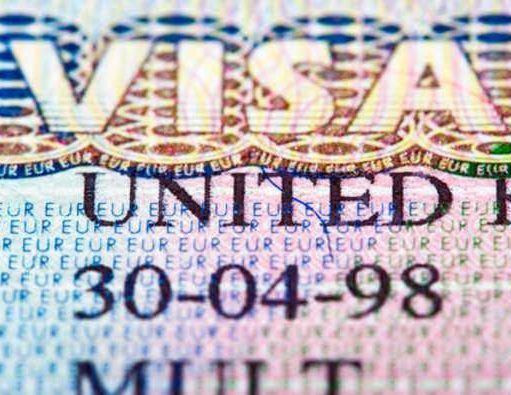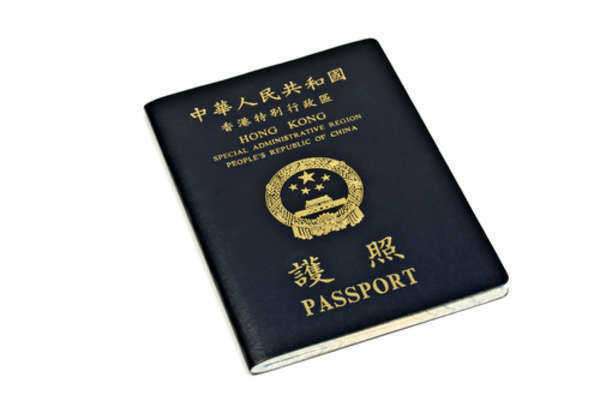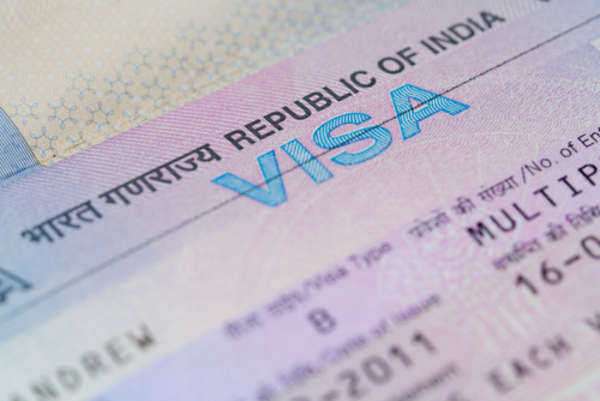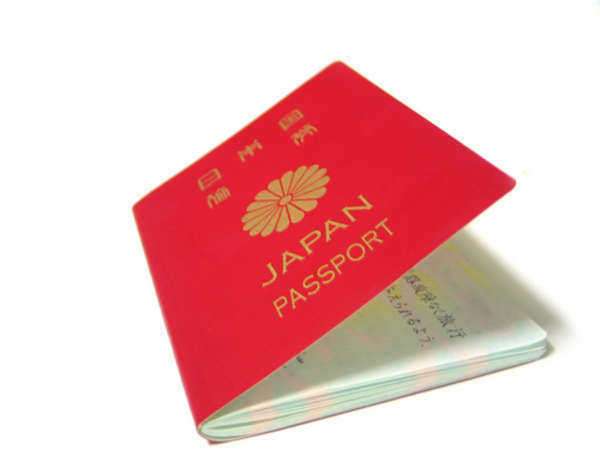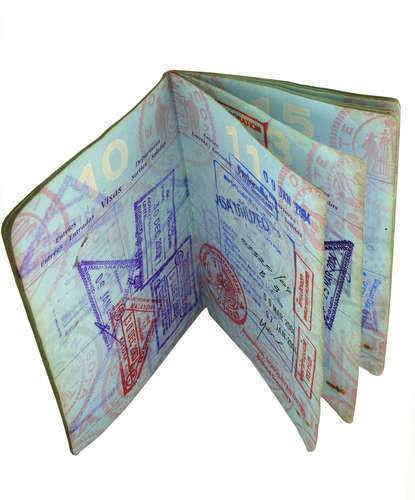Handy Information on Foreign Visas
Travelling to a foreign country involves a lot of planning, packing and paperwork. One of the most important aspects of overseas travel is obtaining the necessary visa to enter the country. A visa is a legal authorization granted by the government of the host country allowing foreigners to enter, stay and exit the country during a specified period. In most cases, visas are granted only for specific purposes such as tourism, studies, work, business or medical treatment. Applying for a visa may seem like a daunting task, but with the right information and resources, it can be a smooth and hassle-free process.
This article provides comprehensive, up-to-date information on foreign visas, covering different types of visas, application procedures, requirements, fees and validity. Whether you are a first-time traveller or a frequent flyer, this article will help you navigate the complexities of visa applications and make informed decisions.
Types of Foreign Visas
The type of visa required for travel abroad depends on the purpose of the trip and the requirements of the host country. Generally, there are three main types of visas: tourist visas, business visas and student visas. Let us discuss each of these in detail.
1. Tourist Visas
A tourist visa, as the name suggests, is issued to individuals travelling for the purpose of leisure, sightseeing and recreation. These are the most commonly issued visas and are usually valid for a period of 30 to 90 days. Some countries may also issue short-term transit visas for travellers who are making a stopover on their way to another destination.
To apply for a tourist visa, you will need to submit the following documents:
– A valid passport with a minimum validity of six months from the date of entry to the foreign country.
– A completed visa application form.
– Two recent passport-size photographs.
– Proof of travel arrangements such as flight tickets and hotel bookings.
– Financial proof such as bank statements or credit card statements showing sufficient funds for the trip.
– A letter of invitation from the host country, if required.
It is essential to check the visa requirements and regulations of the host country before applying for a visa. Some countries also require travellers to obtain additional permits or visas for certain activities such as adventure sports or cultural events.
2. Business Visas
A business visa is issued to individuals travelling for work-related purposes such as attending conferences, meeting clients, negotiating deals or conducting training programs. The validity of business visas varies depending on the duration of the trip and the frequency of visits.
To apply for a business visa, you will need to submit the following documents:
– A valid passport with a minimum validity of six months from the date of entry to the foreign country.
– A completed visa application form.
– Two recent passport-size photographs.
– A letter from the employer stating the purpose of the trip and the duration of stay.
– An invitation letter from the host company or organization.
– Financial proof such as bank statements or credit card statements showing sufficient funds for the trip.
It is also advisable to check the visa regulations of the host country regarding business activities, taxes and work permits.
3. Student Visas
A student visa is issued to individuals who are planning to study in a foreign country. The validity of student visas depends on the duration of the study program.
To apply for a student visa, you will need to submit the following documents:
– A valid passport with a minimum validity of six months from the date of entry to the foreign country.
– A completed visa application form.
– Two recent passport-size photographs.
– Acceptance letter from the educational institution.
– Evidence of financial support such as bank statements or scholarship certificates.
– Medical certificate and vaccinations, if required.
– Police clearance certificate, if required.
It is important to note that some countries may require students to obtain additional permits or visas for internships, part-time work or volunteer programs.
Application Procedures for Foreign Visas
The application process for foreign visas varies depending on the host country and the type of visa required. In general, the steps involved in applying for a visa are as follows:
Step 1: Check the visa requirements
The first step in applying for a visa is to check the visa requirements and regulations of the host country. This information can be obtained from the embassy or consulate of the host country in your home country or from the official website of the consulate. Check the validity period, fees and processing time for the visa application.
Step 2: Gather the required documents
Once you have checked the visa requirements, gather all the necessary documents such as the passport, visa application form, photographs, invitation letter, financial proof and other supporting documents.
Step 3: Submit the visa application
The next step is to submit the visa application along with the required documents to the embassy or consulate of the host country. Some countries may also allow online visa applications or submission through authorized visa agencies.
Step 4: Pay the visa fees
Most countries charge a fee for visa applications, which must be paid at the time of submission. Payment can be made through cash, bank transfer or credit card.
Step 5: Attend the visa interview
In some cases, the host country may require applicants to attend an interview to assess their eligibility for a visa. The interview may be conducted in person or through video conferencing.
Step 6: Receive the visa
Once the visa application has been processed, the embassy or consulate will inform the applicant of the decision. If the visa is granted, the passport will be stamped with the visa and returned to the applicant. It is important to check the validity dates and other details of the visa before travelling.
Requirements for Foreign Visas
The requirements for foreign visas vary depending on the type of visa and the host country. Some common requirements for most visas include:
– A valid passport with a minimum validity of six months from the date of entry to the foreign country.
– Visa application form filled accurately and completely.
– Photographs that meet the requirements of the host country.
– Proof of travel arrangements such as flight tickets and hotel bookings.
– Financial proof such as bank statements or credit card statements showing sufficient funds for the trip.
– Invitations or supporting letters from the host country or employer, if required.
– Medical and vaccination records, if required.
– Police clearance certificate, if required.
It is important to note that some countries may have additional requirements such as language proficiency tests, health examinations or security clearances.
Fees for Foreign Visas
The visa fees for foreign travel vary depending on the host country and the type of visa required. The fees may range from a few dollars to several hundred dollars. Some countries may also charge additional processing fees, courier fees or expedited service fees. It is important to check the visa fees and payment methods before submitting the application.
Validity of Foreign Visas
The validity of foreign visas depends on the host country and the type of visa issued. Most visas are valid for a period of 30 to 90 days for tourist purposes. Business visas may be valid for up to one year or for the duration of the project. Student visas may be valid for the duration of the study program. It is important to check the validity period and other details of the visa before travelling to avoid any inconvenience or penalties.
Conclusion
Obtaining a foreign visa is an essential part of international travel. Whether you are travelling for leisure, business or study purposes, it is important to follow the visa requirements and regulations of the host country. This article provides handy information on foreign visas, covering different types of visas, application procedures, requirements, fees and validity. Use the official government resources to get updated information on the visa regulations and requirements of the host country. With the right preparation and documentation, obtaining a foreign visa can be a smooth and stress-free process. Happy traveling!
With over a hundred independent nations, commonwealths, overseas territories, and otherwise organized territories in existence worldwide, the project of trying to compile visa-related procedural information for all of them is a tremendous undertaking.
Even so, it is a responsibility the United States Department of State is charged with, as it is the major diplomatic wing of the American Cabinet and has primary oversight of the visa authorization process. As one might imagine, the geographic variability of nation states from continent to continent tends to manifest itself in peculiar and substantial differences in how visas are handled by each one of them. Thus, to expect a comprehensive synthesis of all that international visa policies have to offer is not only impractical, but downright ludicrous.
Perhaps as it should be, the responsibility falls on the shoulders of the visa applicant to determine what is both required by the country to which they plan to travel and even what practical sense about travel dictates. To appreciate how expansive international immigration lawVisas to the United Kingdom Visas to Australia Visas to Canada passport Visas to Russia
As is common with foreign visas, there are bright spots for Americans. Usually, travelers from the United States will be able to secure tourist visa and entry visa approval at an Egyptian port of entry (though this presents a risk in itself), whereas residents of other countries, notably those from all other African countries, will have to obtain their documentation in advance.
Even so, as noted, American and European visa holders should be especially wary of their surroundings. For instance, politically-based demonstrations may become violent, and owing to its geographic position, Egypt is a more than viable target for the emergence of terrorist cells. Travel to Egypt may also involve detailed immunization records or shots in the event the individual comes from a region subject to outbreaks of disease, especially bird and swine flu.
Chinese visas and the trappings of travel may not be as much of a concern based on suspicions of terrorism, but even so, the economic and political policies of China may either be seen as a stimulus or a hindrance to the prospective traveler. With American visitors to China, the factors are indeed complicated. Seeing as China is party to a period of economic prosperity as compared to other countries, the decision to travel abroad may be financially advantageous. However, this is a drastic measure, and thus a Chinese visa may not be readily available considering how the United States is losing investments to China.
Moreover, there are definite concerns as expressed by diplomatic and humanitarian bodies about the overly large hand the Chinese government plays in the everyday lives of its citizens and whether it is too restrictive (as in the case of free speech) or not enough (as in management of standards of living). Critically to our pursuits, some of these concerns are indeed reflected in how visas are issued and scrutinized. One thing tourists would be keen to keep in mind is that they will need an exit visa to leave the country, and should go through a consulate or other trustworthy conduit.
China’s position towards Tibet and failure to recognize it as a sovereign state are also relevant, as foreigners will need a special permit to enter the region and will be able to gain entry to a select few specified areas. Other potential problems include questionable detention procedures used by the police, who have been given some authority over immigration procedure, and health standards, or lack thereof.
While Malaysia, part of the region known as Southeast Asia, is far removed from Afghanistan, Iraq and the rest of the Middle East, the country is also potentially dangerous to the Western traveler based on its identity as a Muslim state. The official state religion of Malaysia is Islam, and more critically, the world community has identified organizations within Malaysia that have suggested ties with international terrorist organizations.
However, visas to Malaysia are still sought out quite actively by prospective travelers the world over, whether it be for the purpose of a generally safer home in the region, better chances at employment for economic migrants from nearby nations, or simply people that are looking to take advantage of the inability of the government to prosecute illegal immigration.
This is not to say, however, that there are not logistics that could doom one’s travel plans. For those who need visas, documentation must be plain to see, and all travelers to the Sabah and Sarawak provinces will want to keep valid passports close at hand. Visitors to Malaysia will also want to be on guard for petty theftdrug offenses
Visas to Pakistan are not prohibited by law to travelers, even Americans. Suffice to say, though, based on its location, Pakistan is strongly recommended against for non-essential visits. Once more, the heavy influence of Islam in the region is a threat due to those radical practitioners who wish harm to foreigners, and even when terrorist groups are not part of the mix, the situation may also be dangerous based on crime and kidnappings for ransoms. In fact, stays in Pakistan have been deemed risky for American diplomats and government officials alike. Temporary residence in hotels is expressly forbidden by their superiors, as is the use of public transportation.
Consequently, for the civilian traveler, the precautions to be taken are even more important. Itineraries should be established, adhered to, and explained to an emergency contact. Anyone seeking a tourist visa should also stick to metropolitan areas of Pakistan where tourism is safer, and must specify the reason of the trip, whether it be to visit family, pay religious homage or to go on a historical survey.
Visas to the United Arab Emirates The federation of the United Arab Emirates, or the UAE, exerts a lot of control over its rules on travel and the availability, or unavailability, of visas. These rules come not as a concern over national security so much as attentiveness to the national interest, or rather, the interest of the collective of emirates. The terminology of the visas also distinguishes UAE visas from other visas. Rather than being called a travel visa or visitor visa, a visa used solely for the purpose of short pleasurable trips and business
The issue of outsourcing labor to foreign countries was a topic of considerable interest for American politicians leading up to the 2004 presidential election, and has not diminished with the effects of the recession on the American job market. Often, Eastern nations are implicated in the decision of corporations to contract labor to a third party in another country, one of the primary targets being India. Meanwhile, for wholly different reasons, outsourcing also applies to the way India processes visas to authorize foreign nationals into its boundaries. Indian consulates with the power to grant visas for travel ceded this authority to Travisa Outsourcing, Inc. some years ago.
There are additional idiosyncratic aspects of Indian visa applications that relate only to a small subset of individuals, but nonetheless, they may come into play. For applicants to the Overseas Citizens of India program, it must be realized that this will not actually grant Indian citizenship, but something closer to permanent residency documentation must be secured prior to arrival in India.
American-Japanese relations during World War II were decidedly contentious, as Japan initiated conflict with the United States through their role in the bombing of Pearl Harbor and America broke the will of Japanese forces to continue fighting after the destruction of Nagasaki and Hiroshima via the atomic bomb. Despite this being relatively recent history, the political relationship between the two nations has improved considerably, and there is mutual recognition for the nations to work together for their economic benefit. Thus, business travel and tourism between the nations is highly encouraged, though this is not equivalent to a free pass to Japan, and can even be more restrictive than American travels to other nations.
For one, Japan is very explicit about the fact that no payment can be received while on a travel visa or similar passport-based provision, even when working for a private individual. Japanese immigration officials are also very strict about transit through the country to China for people who do not possess a valid Chinese visa. Yet more restrictions occur for those looking to plan a working holiday to Japan; only a handful of countries have such understandings with Japan, and this does not include the United States.
Owing to the high poverty and unemployment rates in large sections of South Africa, the idea that South Africa may not be an obvious travel destination unless one is going on safari, and the very fact that a visa may not be needed for travel to South Africa (this applies, once more, to denizens of the United States of America), making sure one’s passport, health documentation and visa documentation are up to code may be an oversight to many. Nonetheless, South Africa applies some apparently strange rules to its visa review process.
One requirement that is seemingly very arbitrary but very real is the need for at least one blank visa page in one’s passport, even though the traveler may not have needed visa documentation. Visas are also needed even for volunteers and charitable work. Plus, while this would likely only affect travelers for nearby regions, proof of an immunization against yellow fever is a prudent measure, especially if one needs to travel with due efficiency through customs.
When it comes to travel to Brazil and Brazilian visa policy, much of it may be poorly characterized by representations of its people in popular media, whether this be relating to the perception that Brazil is a backwards country or simply a haven for tourism where rules and restrictions do not apply. In either case, these are largely erroneous concepts. In response to charges of Brazil being little more than a series of slums, Brazil is a developed nation.
Even so, travelers should pay attention to the inefficiency and danger of public transportation on Brazil’s many roads. With regard to American travel to the region, visa documentation is, in fact, very necessary and wholly inaccessible to travelers upon reaching a Brazilian port of entry. Moreover, for the subgroup of American citizens who also are nationals of Brazil, a Brazilian visa will be not be a possibility, necessitating the approval for and purchase of a Brazilian passport, unless previously owned.
Whereas most nations seem to be predisposed to making it more difficult to secure a visa, Costa Rica’s adopted policy reflects its peaceful, neutral nature. This very nature also helps to explain why some people might choose to forgo a non-visa requirement for short-term vacations for a more permanent form of residence in Costa Rica.



